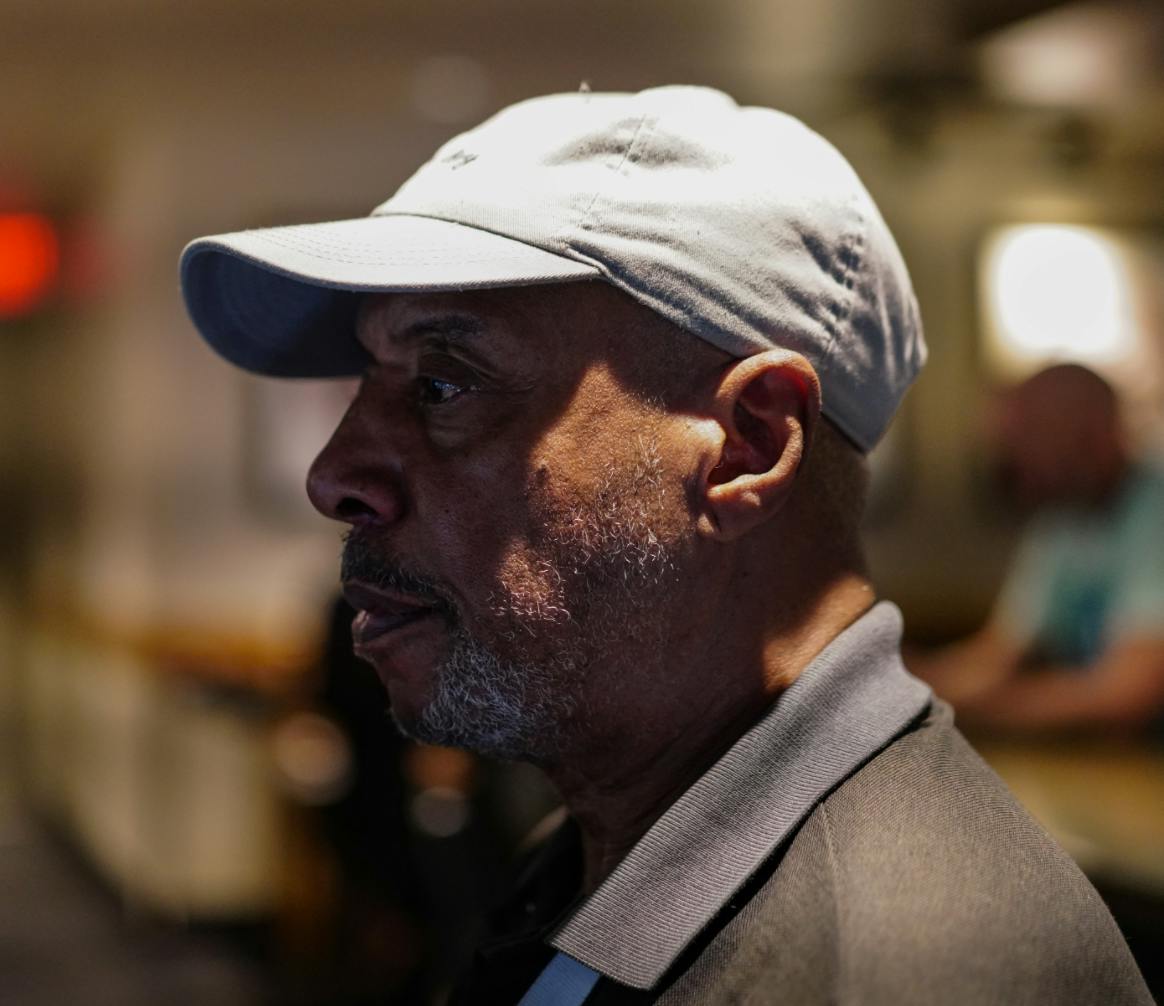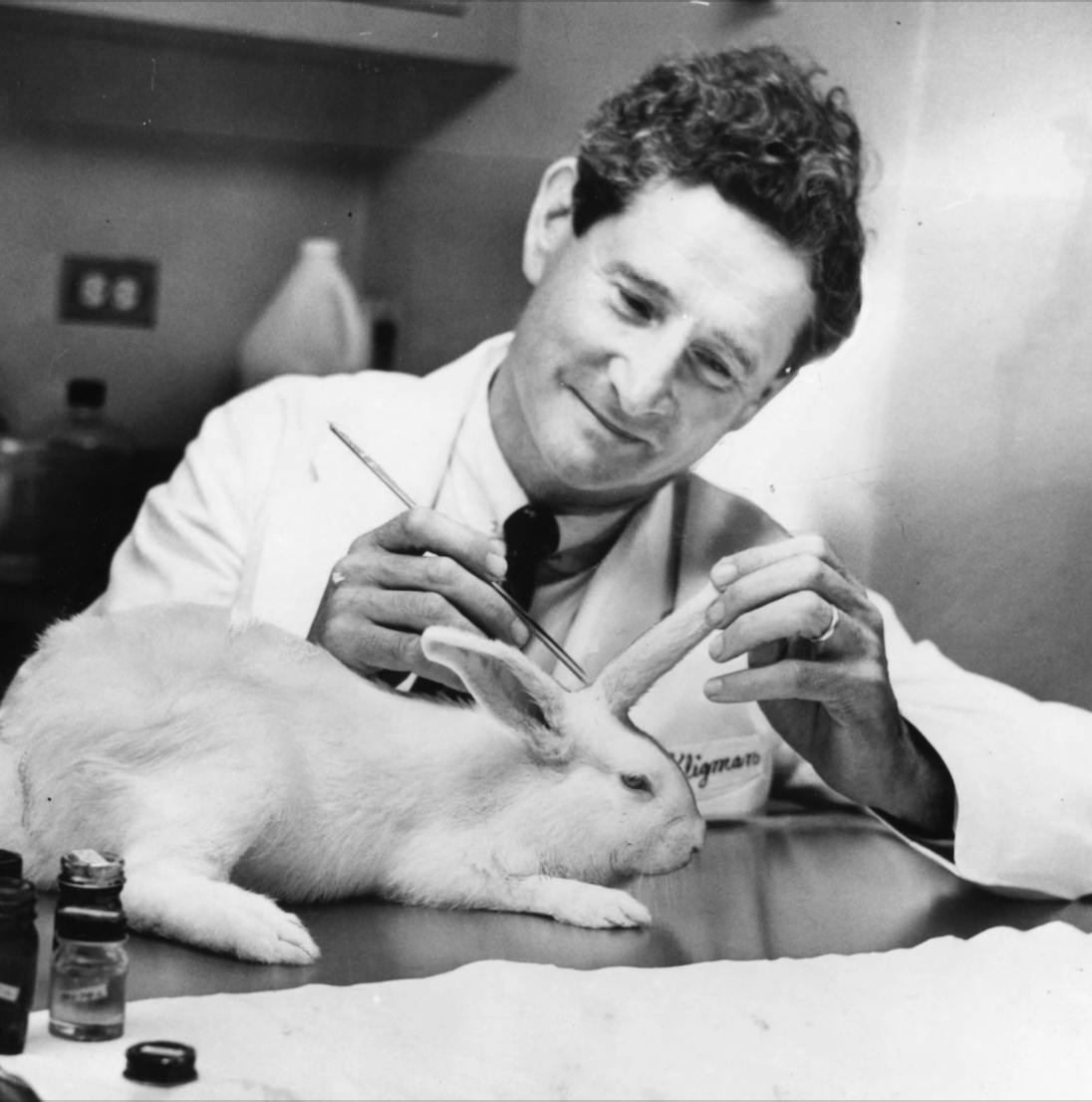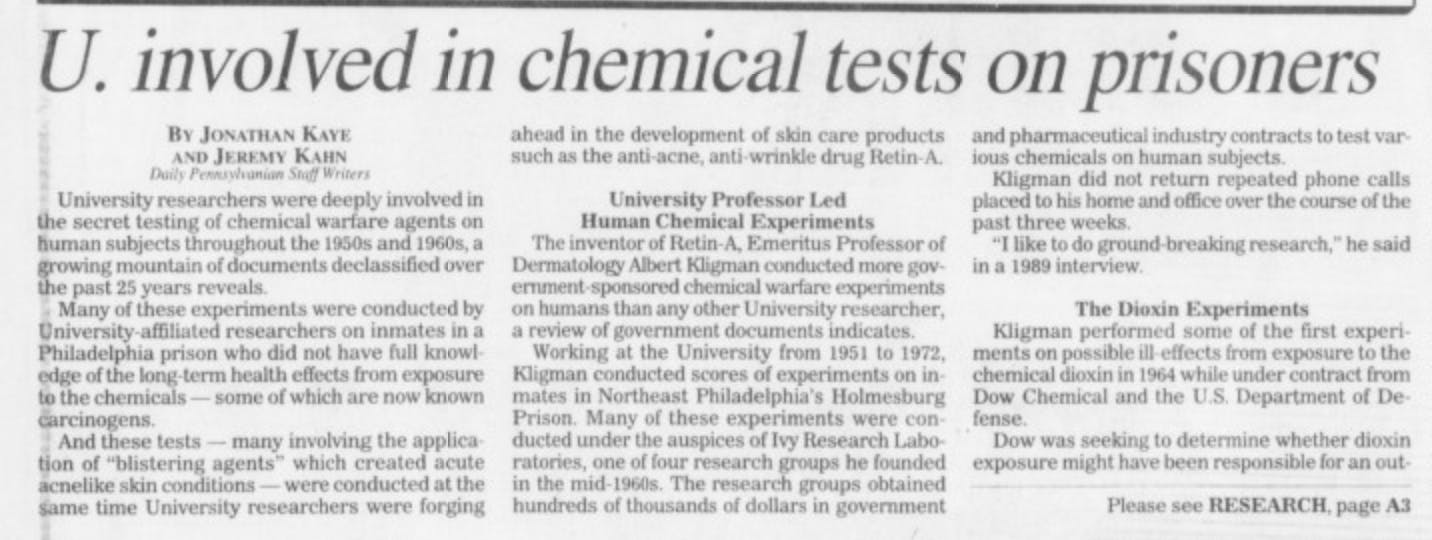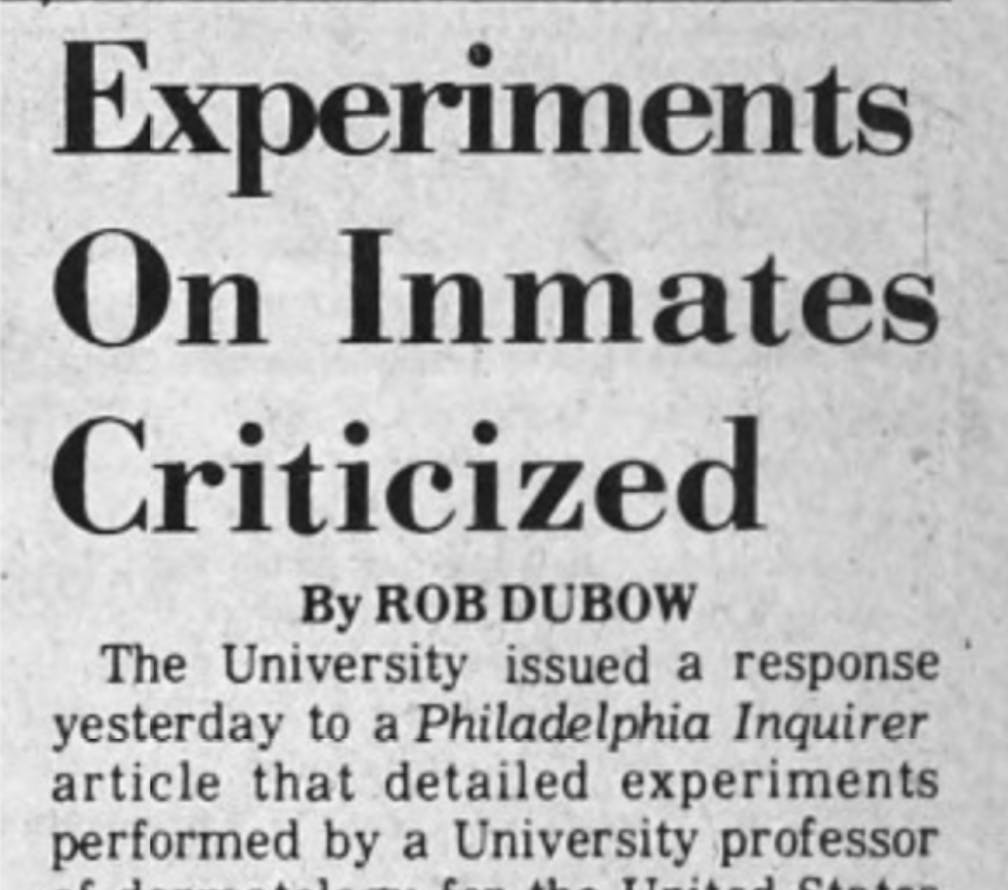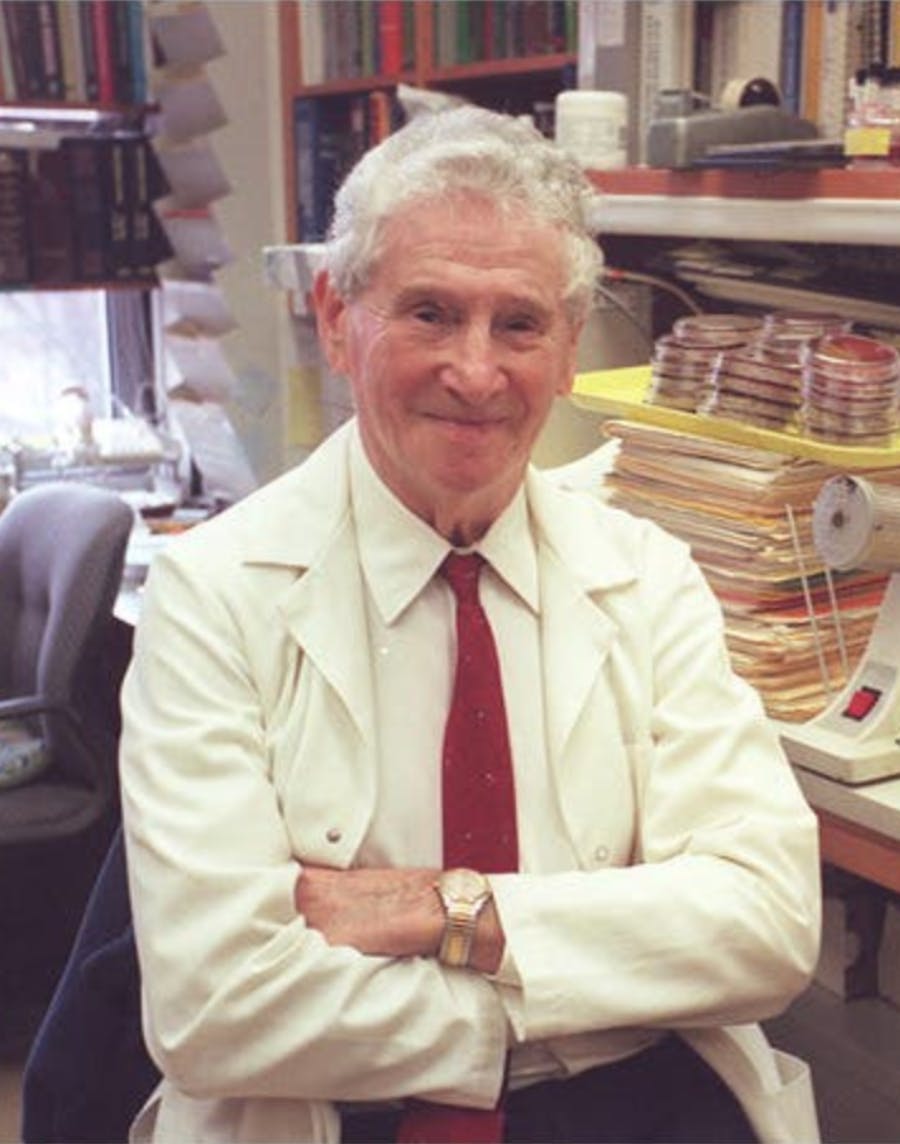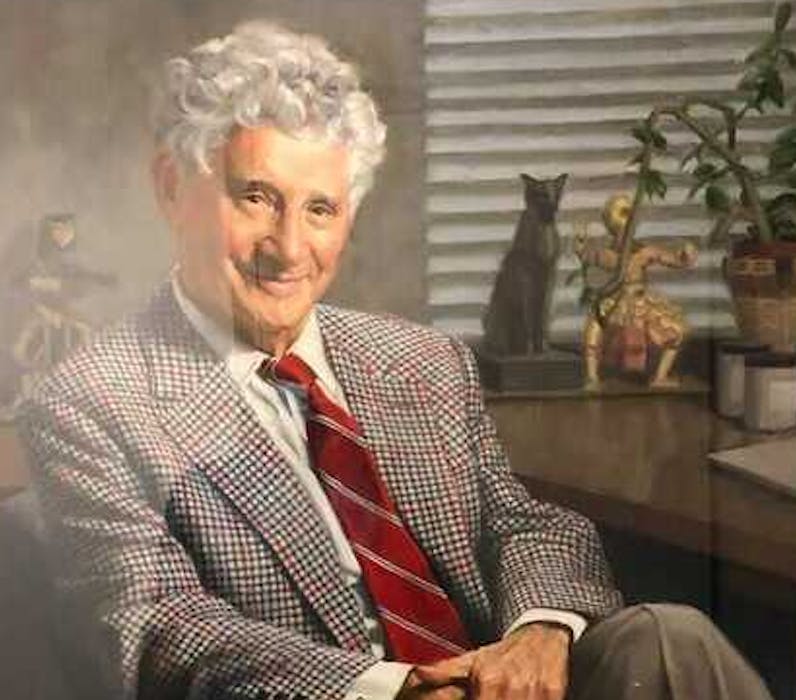At the protest, former study participant Anthony Edwards told the DP, "They coerced us – 85% were Black and functional illiterate – to believe that tests were safe ... [Kligman] owes us a debt."
Marc Ackerman (D '98), Jim Ackerman's son, remembers the night vividly. It was the night he was inducted into the College of Physicians as a fellow. Marc says that the doctors at the ceremony were more annoyed by the inconvenience of the protest than appalled by the accusations weighted against Kligman, the evening's honoree.
"It was really remarkable – the reaction of the fellows of the College of Physicians who were inside that night. [They] were sort of appalled by the protest and weren't even curious in terms of discussing ... the merits of the argument," he says. "My own observation, sitting two rows behind him, was that Al Kligman was very smug – almost with a smile on his face."
Kligman's lack of repentance lasted throughout his life. "It was years before the authorities knew that I was conducting various studies on [incarcerated] volunteers. Things were simpler then. Informed consent was unheard of. No one asked me what I was doing. It was a wonderful time," he once said.
In 2006, Kligman told The New York Times that shutting down the prison experiments was a "big mistake."
⚫ ⚫ ⚫
Today, a large framed painting of Albert Kligman, who died in 2010, watches over one of the wings in the University's medical center. Kligman poses with his hands in his lap, donning a bright red tie and checkered suit jacket. On his face sits a smile, the same one Marc Ackerman observed at the College of Physicians in October 2003.
Recently, many institutions have felt pressure to reconsider who they publicly honor. In June, Princeton University removed former President Woodrow Wilson's name from its school of public policy and residential college house due to his racist history. The University of Southern California stripped the name of Rufus von KleinSmid from a major campus building, citing his role in the eugenics movement. Cold Spring Harbor Laboratory in New York revoked all titles and honors from Nobel Prize-winning scientist James Watson over "reprehensible" comments on scientific racism.
At the University of Pittsburgh, the graduate school for public health was housed in a building named after former U.S. Surgeon General Thomas Parran. Parran played a key role in the Tuskegee syphilis experiments that harmed Black men and women in the 1930s and 40s.
Gregory Dober, a professor at Lake Erie College of Osteopathic Medicine, uncovered the connection between Parran and the Tuskegee experiments while conducting research for a book. His discoveries prompted the University of Pittsburgh to remove Parran's name from the building in 2018. For Dober, Kligman's controversial history and his close relationship to Penn mean the University needs to take strong action.
"Kligman designed, developed, and conducted the unethical experiments, as well as sought individual financial gain," Dober says. "If Pitt found it worth diligently deliberating on Parran's legacy, how can Penn not justify the same?"
Kligman's experiments were an issue of medical ethics, but they were also, indisputably, an issue of race.
In a piece published in the Inquirer, Lipoff and Adewole Adamson, a medical researcher at the University of Texas, wrote, "In a time when protests consistently remind us that Black lives matter, we must remember Kligman's experimental human subjects, who were mostly Black men ... were treated as if they mattered less."
The atrocities committed at Holmesburg are part of a long history of the abuse of Black bodies at the hands of medical experts. In the infamous Tuskegee Syphilis Study, researchers denied care to 600 Black men with syphilis, allowing the disease to destroy their lives in the name of research. Tuskegee's implications still loom large over medical practice. Today, Black women are more than three times more likely to die during childbirth than white women. Just five years ago, half of medical trainees in a research study falsely believed that Black patients felt pain at lower rates than white patients. Pain in Black people continues to be grossly under-managed in medical settings.
Due to this enduring history of medical racism, Black Americans have grown skeptical of medical research and physicians. With the rollout of COVID-19 vaccines in recent weeks, many Black people have remained distrustful of a research process that has left out people of color and fatally failed them in the past. "Holmesburg is the flip side of Tuskegee. At Tuskegee, you have sick men who were not treated," Hornblum says. "At Holmesburg, you have healthy men who were made ill."
⚫ ⚫ ⚫
Up until recently, Kligman's name sat on classrooms, laboratories, professorships, and lectures at the University. Some of these relics to Kligman still stand, although others have been quietly removed from the University's website in recent months.
When asked to comment on Kligman's legacy, Penn offered the following statement:
"The Perelman School of Medicine regrets the manner in which Dr. Kligman's research was conducted – which would not be acceptable by today's standards – and we are committed to upholding our responsibility to ensure the protection of participants in human subjects research. To more clearly address this complicated history, a faculty committee convened by University leadership has been working to review and make recommendations regarding Penn's recognition of Dr. Kligman, an effort which we expect to be completed in the upcoming year."
However, for many who bore witness to Kligman's legacy at Penn, this sentiment isn't enough.
"[Kligman's] controversial legacy is not widely acknowledged or recognized, even amongst people at Penn," says Lipoff. "It is really important that we honestly acknowledge our history and our historical figures for all of their great accomplishments, and for all of their flaws."
Lipoff and Adamson's editorial calls for Penn to cut ties with Kligman, remove his name from all honorifics, and to "fulfill the affirmative obligation to teach about the full context of what was done."
Years after his interaction with Kligman, Jim Ackerman reflects on Penn's lack of action to condemn the experiments, especially as many institutions have reckoned effectively with problematic historical figures.
"It requires a certain amount of courage to tell it like it is," he says. "There was not a great show of courage among people in the medical school and the University administration."
"There are medical institutions that have found out about things that were unethical and experimental in ways that were not to a patient's advantage. They have blown the whistle, retrospectively and retroactively. Penn has had an opportunity for a long time."

